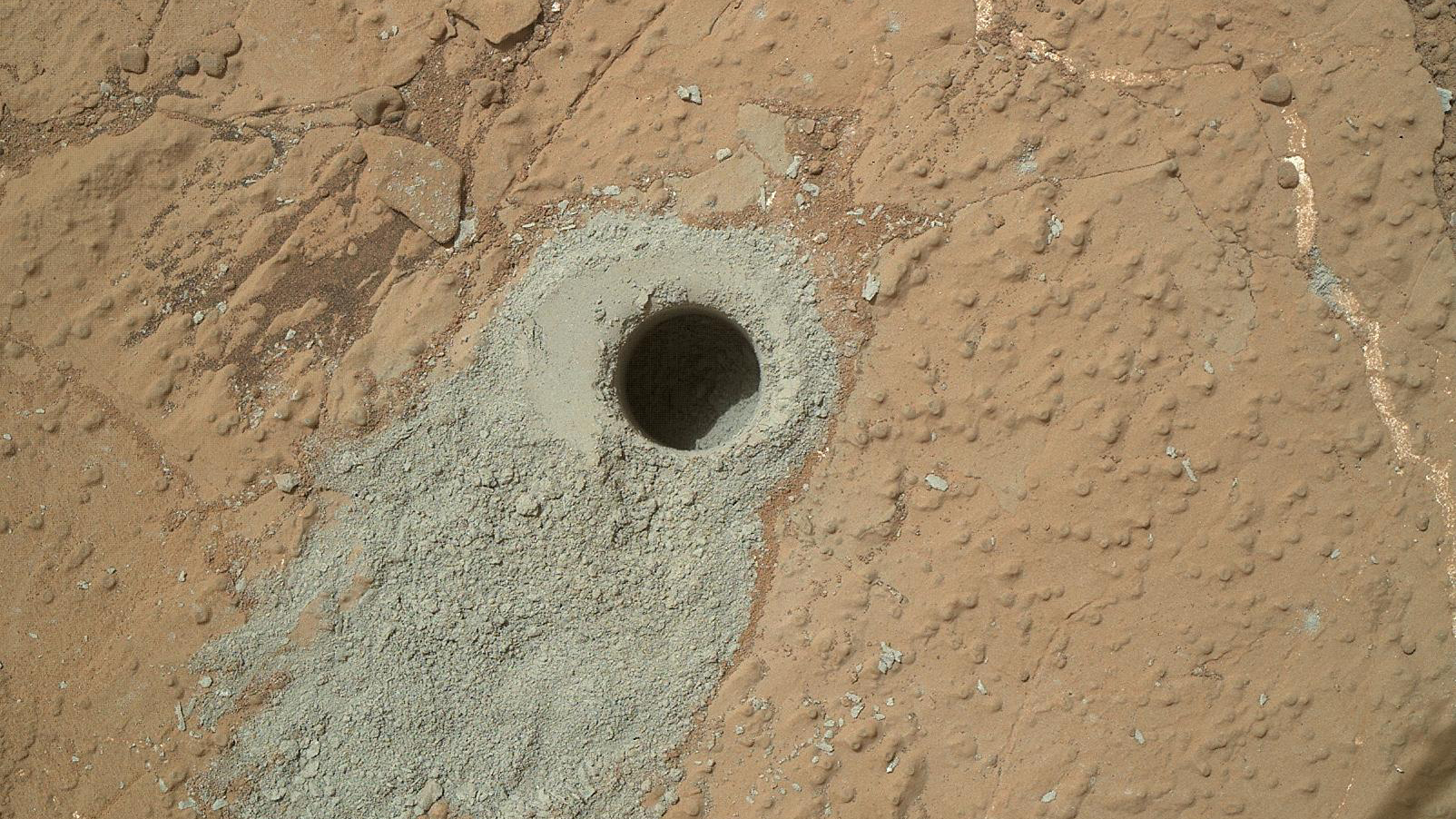What's behind the Martian methane mystery?
The brief spikes of methane observed on Mars tend to follow the seasons, with late spring and early summer seeming to have the highest levels of atmospheric methane.

In late 2013 and early 2014, NASA's Curiosity rover detected an unexpected spike in methane on Mars — 10 times the usual level. Within a few months, the spike faded. Since then, Curiosity has recorded six more of these events, but global measurements of the gas have failed to find anything conclusive.
The cause of these mysterious methane spikes may be a strange form of alien life — or it may just be interesting chemistry. Either way, something odd is happening on the Red Planet.
Methane is relatively straightforward: It's just a carbon atom attached to four hydrogen atoms, and both of those elements are incredibly common in the universe. On Mars, there's plenty of carbon to go around — it forms the backbone of carbon dioxide, the main component of that planet's thin-but-persistent atmosphere.
Hydrogen is also common on Mars — and literally everywhere else in the universe. But hydrogen is a very friendly element and is usually found bound up in some other molecule. To make methane, that hydrogen has to be freed.
Related: Mars' subsurface is 'burping' out methane, and scientists aren't sure why
Thankfully, on Earth, we already know of a process to generate free hydrogen. When water interacts with iron- and magnesium-rich rocks, oxidation can release hydrogen. One of these processes involves olivine, a mineral that's rich in both iron and magnesium. When olivine and water interact, it leads to a process called serpentinization. The case of olivine is especially interesting because it's a very common mineral on Mars.
Once free, the hydrogen can, under the right conditions, react with carbon dioxide through a process called Fischer-Tropsch synthesis, producing methane. But for all of this to work, Mars needs liquid water. Although the planet was once water-rich, as evidenced by the dried-up riverbeds and erosion, it's certainly very dry now. The only place where liquid water could exist on Mars is deep underground, sprinkled here and there in microscopic cracks and crevices, much like it is in Earth's mantle. If liquid water does exist deep underground, then that water might be able to react with minerals and release hydrogen. The hydrogen could then go on to react with carbon dioxide and produce methane.
Breaking space news, the latest updates on rocket launches, skywatching events and more!
But what could trigger the sudden bursts of methane that Curiosity measured? A purely geologic process has difficulty making quick ramp-ups of methane, because Mars isn't geologically active the same way Earth is.
So maybe Mars is "alive." Certainly there is no life on the surface there now, although it's possible that Mars was home to life in its distant past. If Mars still retains some living creatures, they must also live deep underground, far from the reaches of our current observations.
And that Martian life wouldn't be able to survive on photosynthesis, because sunlight can't penetrate to those depths. Nor could it use oxygen, as there isn't enough free oxygen on that planet to sustain it. So any hidden life wouldn't be like most living creatures on Earth.
But thankfully, Earth has such a wide variety of life-forms that there is a class of organisms that could fit the bill: methanogens. These single-celled organisms have very odd metabolisms — notably, they "eat" hydrogen and excrete methane.
In this scenario, methanogens would take the place of chemical processes to produce methane on Mars. Like all living creatures on Earth, they would still need carbon, and they would still need liquid water to react with iron-rich minerals to generate liberated hydrogen. But from there, the methanogens would consume the hydrogen and produce methane as a waste gas.
The brief spikes of methane observed on Mars tend to follow the seasons, with late spring and early summer seeming to have the highest levels of atmospheric methane. While introducing life as a hypothesis to explain some astronomical mystery is always a reach, in this case it's a natural fit, since many living organisms naturally respond to seasonal changes.
Still, there is no other evidence for life on the Red Planet. And there are no signs of other byproducts of methanogens, like excess levels of ethane. So it's not a slam-dunk case for life on Mars.
Plus, there has to be some mechanism for destroying methane on Mars as quickly as it appears. While methane is unstable in the Martian atmosphere, current established methods, like Ub dissociation and oxidation, take centuries to play out. So whatever method we concoct to explain the sudden appearance of methane has to be matched with a method for removing it.
Whatever's happening on Mars, the seasonal rise and fall of methane is a sign that there is much more to learn about our neighboring planet and that it's holding many secrets beneath its surface.

Paul M. Sutter is a cosmologist at Johns Hopkins University, host of Ask a Spaceman, and author of How to Die in Space.
